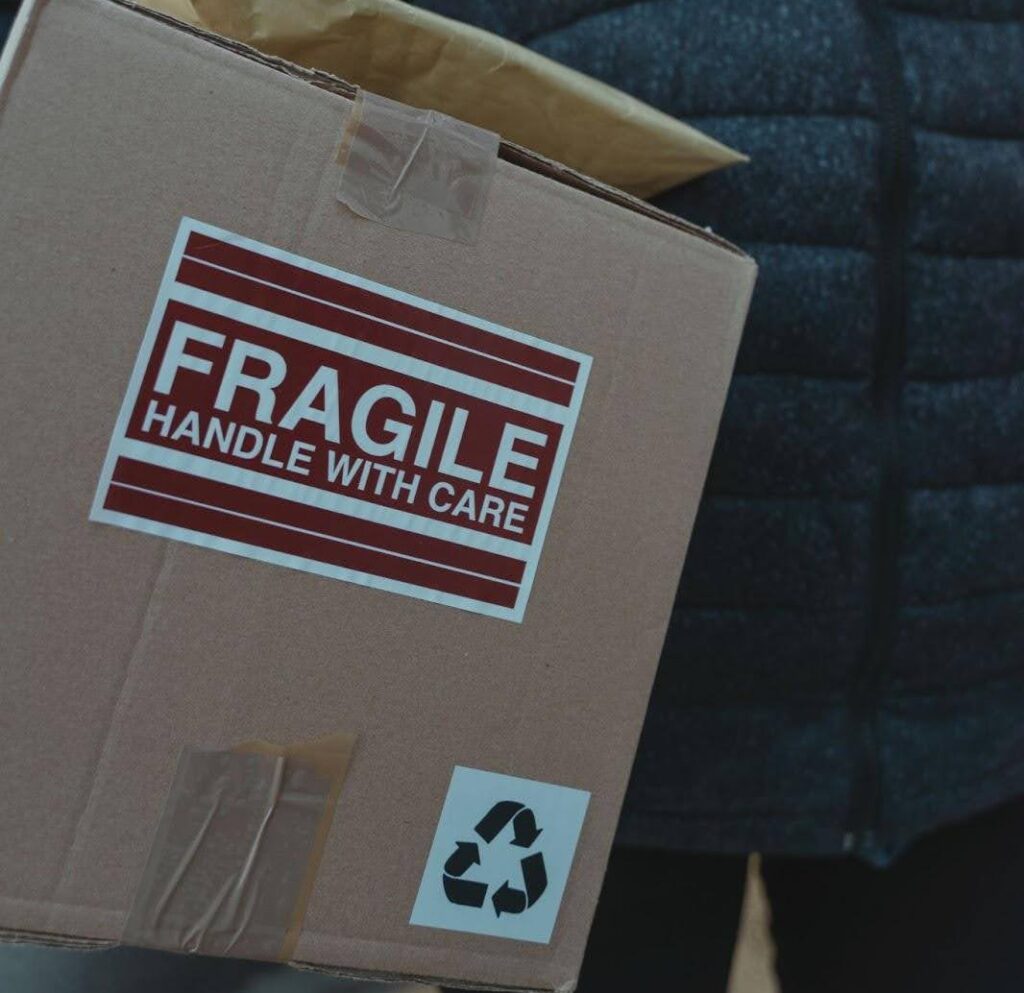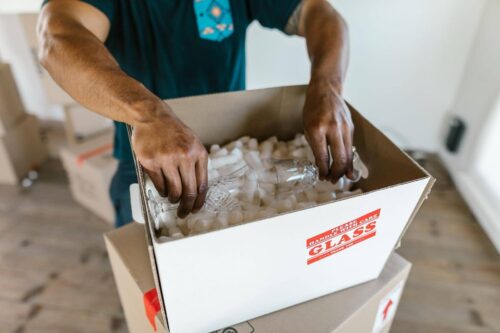Fragile Goods: Definition, Packing, and Tips

Ever wondered how to ensure your delicate items reach their destination in one piece? This article provides insights into what constitutes fragile goods and how you can ensure their safe transit.
Shipping items from one place to another is already tricky, but dealing with fragile goods is an entirely different ball game. Every year, an alarming amount of breakable items meet an unfortunate fate due to improper handling or packaging.
This article provides insights into what constitutes fragile goods and how you can ensure their safe transit. If you’ve ever wondered how to ensure your delicate items reach their destination in one piece, read on!
Fragile Goods: What Makes Them Different
Fragile goods, as the name suggests, can break easily during transit. They need special attention because their delicate nature makes them susceptible to damage from bumps, drops, or even sudden movements. In the shipping industry, handling these items is crucial.
Shipping companies often have protocols to ensure that these delicate parcels are treated with the utmost care. Fragile items range from glassware, porcelain, and musical instruments to electronics that can’t withstand rough handling.
The world of fragile goods is vast and diverse. Musical instruments, for instance, are not just considered fragile due to their exterior. Like those in wind instruments, the intricate internal mechanics can be just as delicate and vulnerable.
Furthermore, the shipping industry uses different types of specialized equipment or separate storage areas to ensure they aren’t putting these items under heavy goods or in high-risk areas.
- Dangerous Goods: These items can pose a risk to health, safety, or property during shipping, such as chemicals or flammable materials. They require unique handling, packaging, and a unique label.
- Perishable Goods: Items that can decay or become spoiled over time, like food or certain pharmaceuticals. They might need a temperature-controlled environment.
- Fragile Goods: Items easily broken or damaged. They need cushioning material, a fragile sticker, and gentle handling.
Packaging Fragile Items

When packaging fragile items, choosing the right materials and methods can mean the difference between a happy customer and a returned item.
Common materials include:
- Shrink wrap
- Crinkle paper
- Packing peanuts
They provide an extra layer of protection by filling the empty space in a box and cushioning the item. Moreover, a fragile sticker and clear shipping label alert handlers to a delicately packaged item.
However, some common mistakes people make include:
- Not using enough padding
- Overloading a small box
- Forgetting to place multiple stickers on all sides of the package
- Not investing in insurance for high-value fragile items
The consequences of neglecting the packaging process can be severe. Damaged shipments can harm an ecommerce business’s reputation, leading to a loss of trust and potential future sales.
There’s also the risk of incurring additional costs for re-shipment, not to mention the pain of managing broken inventory. Businesses must factor in the emotional toll on the customer, who might have eagerly awaited their purchase only to find it delivered in pieces.
Tips on Preparing Fragile Goods
- Use Specialized Cartons: Certain items, like glassware, have specialized boxes designed for their shape and fragility.
- Choose the Right Wrap: Not just any wrap will do. Bubble wrap offers an extra layer of cushioning that can absorb shocks.
- Seal with Quality Tape: The right tape ensures your package remains closed and protected throughout shipping.
- Consider a Specialized Shipping Company: Some companies specialize in shipping fragile items and can offer extra care and expertise.
Remember, the foundation of good packaging lies in understanding the product’s vulnerabilities. For example, while glass is prone to shattering, electronic items might be more sensitive to static or moisture. Using anti-static bubble wrap or bags can be beneficial for the latter.
An additional cardboard layer can help protect against punctures or tears when shipping artwork. Keeping the end recipient in mind and considering the unboxing experience can also guide your packing choices, ensuring the item arrives safely and is a joy to unpack.
Tips for Safe Shipping
- Vetted Shipping Company: Always opt for a professional company with a good reputation to minimize the risk of damaged items.
- Insurance: Insurance can provide peace of mind and financial protection for high value.
- Tracking: Use services that track your fragile items’ journey and ensure they’re on the right path.
- Feedback: Always read reviews of shipping companies. Previous customers’ experiences can give insight into how well your fragile products will be treated.
It’s essential to remember that while you might be well-versed with the ins and outs of your product, shipping companies handle many items daily. Explicit instructions and clear communication are vital. If a product has special requirements, like being kept upright, ensure this information is unmistakably marked on the package.
It might seem redundant, but always have a backup plan. Delays, mistakes, and mishaps can occur, so being prepared with an action plan can save time, money, and stress.
In conclusion, shipping fragile goods can be a smooth process. With the right preparation and attention to detail, you can ensure your fragile item arrives safely at their destination.
Tips on Shopping for the Best Shipping Materials
When looking to ship fragile items, the quality of the materials you use can play a pivotal role in ensuring the items reach their destination unscathed. Here’s how to make sure you’re selecting the best:
- Opt for Double-Walled Boxes: These provide an extra layer of protection and can absorb shocks better than single-walled alternatives.
- Biodegradable Peanuts: While packing peanuts is effective, eco-friendly options are better for the environment and decompose over time.
- Corrugated Bubble Wrap: This kind offers more cushioning than standard bubble wrap and is ideal for delicate items.
- Padded Envelopes for Smaller Items: These are perfect for shipping single fragile items, as they come with built-in cushioning.
- Consider Eco-Friendly Materials: From recycled boxes to crinkle paper made from sustainable sources, choosing green options protects your items and the planet.
Tips for Shipping Long-Distance
Shipping items over a long distance increases the risk of damage due to the extended transit time and multiple handling instances. Keep these pointers in mind:
- Opt for Air Cushioning: They offer durable protection, are lightweight, and reduce shipping costs.
- Sealed Air Pouches: These can offer protection from moisture and impacts for items like electronics.
- Avoid Overpacking: This can strain the box and lead to ruptures. Ensure there’s enough padding but less than the box bulges.
- Customs Documentation: When shipping internationally, ensure all customs documentation is accurate to avoid delays.
- Climate Considerations: If shipping to places with extreme temperatures, consider how this could affect your item and package accordingly.
Tips for Labeling
Proper labeling is the first line of defense for your fragile goods. A marked package alerts handlers to its contents and guides handling. Ensure you:
- Use Bold, Clear Fonts: This ensures that labels are easily readable.
- Place Labels on Multiple Sides: This increases the chance handlers will notice the ‘fragile’ warning.
- Be Specific: Instead of just “Fragile,” labels like “Handle with Care” or “Glass Inside” can give handlers a clearer idea of the package contents.
Insured Goods
Getting insured for a fragile item can be the safety net that brings both sellers and customers peace of mind. While the mere thought of a damaged shipment can lead to lost business, having insurance coverage mitigates potential financial setbacks and helps maintain a stellar reputation.
Pros:
- Financial Security: Insurance ensures that the cost of damaged goods is covered.
- Customer Trust: Customers appreciate businesses that offer insured shipping, knowing their purchase is safeguarded.
- Peace of Mind: Reduces stress associated with shipping fragile items.
Cons:
- Additional Costs: Insuring goods might increase shipping charges.
- Claim Process: Some insurance claims can be time-consuming and cumbersome.
FAQs
Dive into the most commonly asked questions about fragile goods.
What are fragile goods?
Fragile goods are items susceptible to breakage or damage during shipping and handling.
What are examples of fragile items?
Examples include glassware, musical instruments, electronics, and certain pieces of furniture.
What are the characteristics of fragile goods?
They are easy to break, often delicate, require special packing materials, and might need specific handling during transit.
Parting Words on Fragile Goods for Shipping
Ensuring the safety of fragile goods during shipping is paramount for any ecommerce business. You can safeguard fragile items and keep your customers happy with the right packaging materials, labeling, and insurance.
As we’ve explored, it’s all about preparation and making informed choices for your precious cargo.
